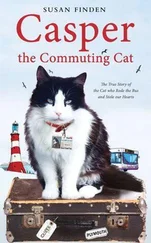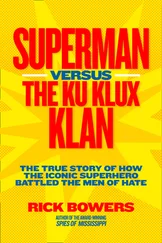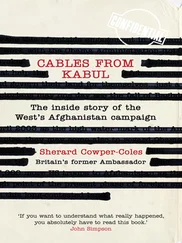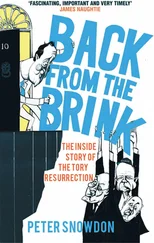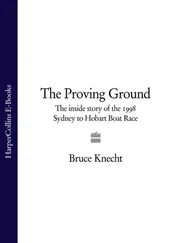Andrew Sorkin - Too Big to Fail - The Inside Story of How Wall Street and Washington Fought to Save the FinancialSystem--and Themselves
Здесь есть возможность читать онлайн «Andrew Sorkin - Too Big to Fail - The Inside Story of How Wall Street and Washington Fought to Save the FinancialSystem--and Themselves» весь текст электронной книги совершенно бесплатно (целиком полную версию без сокращений). В некоторых случаях можно слушать аудио, скачать через торрент в формате fb2 и присутствует краткое содержание. Жанр: Старинная литература, на английском языке. Описание произведения, (предисловие) а так же отзывы посетителей доступны на портале библиотеки ЛибКат.
- Название:Too Big to Fail: The Inside Story of How Wall Street and Washington Fought to Save the FinancialSystem--and Themselves
- Автор:
- Жанр:
- Год:неизвестен
- ISBN:нет данных
- Рейтинг книги:4 / 5. Голосов: 1
-
Избранное:Добавить в избранное
- Отзывы:
-
Ваша оценка:
- 80
- 1
- 2
- 3
- 4
- 5
Too Big to Fail: The Inside Story of How Wall Street and Washington Fought to Save the FinancialSystem--and Themselves: краткое содержание, описание и аннотация
Предлагаем к чтению аннотацию, описание, краткое содержание или предисловие (зависит от того, что написал сам автор книги «Too Big to Fail: The Inside Story of How Wall Street and Washington Fought to Save the FinancialSystem--and Themselves»). Если вы не нашли необходимую информацию о книге — напишите в комментариях, мы постараемся отыскать её.
Too Big to Fail: The Inside Story of How Wall Street and Washington Fought to Save the FinancialSystem--and Themselves — читать онлайн бесплатно полную книгу (весь текст) целиком
Ниже представлен текст книги, разбитый по страницам. Система сохранения места последней прочитанной страницы, позволяет с удобством читать онлайн бесплатно книгу «Too Big to Fail: The Inside Story of How Wall Street and Washington Fought to Save the FinancialSystem--and Themselves», без необходимости каждый раз заново искать на чём Вы остановились. Поставьте закладку, и сможете в любой момент перейти на страницу, на которой закончили чтение.
Интервал:
Закладка:
After a few minutes of chat, Swagel reached into a folder and gingerly handed Bernanke the ten-page outline of the “Break the Glass” paper. Kashkari glanced at his colleagues for reassurance and then began to speak.
“I think we all understand the political calculus here, the limits of what we can legally do. How do you get the authority to prevent a collapse?” Bernanke nodded in agreement, and Kashkari continued. “So, as you know, we in Treasury, in consultation with staffers at the Fed, have been exploring a set of options for the last few months, and I think we have come up with the basic framework. This is meant to be something that if we’re ever on the verge of mayhem, we can pull off the shelf in the event of an emergency and present to Congress and say, ‘Here is our plan.’”
Kashkari looked over at Bernanke, who, having been intently studying the text, had immediately zeroed in on the key of the plan: “Treasury purchases $500 billion from financial institutions via an auction mechanism. Determining what prices to pay for heterogeneous securities would be a key challenge. Treasury would compensate bidder with newly issued Treasury securities, rather than cash. Such an asset-swap would eliminate the need for sterilization by the Fed. Treasury would hire private asset managers to manage the portfolios to maximize value for taxpayers and unwind the positions over time (potentially up to 10 years).”
Bernanke, weighing his words carefully, asked how they had come up with the $500 billion figure.
“We are talking a ballpark estimate of, what, say, $1 trillion in toxic assets?” explained Kashkari. “But we wouldn’t have to buy all of the bad stuff to make a meaningful dent. So, let’s say half. But maybe it’s more like $600 billion.”
As Bernanke continued to study their paper, Kashkari and Swagel took a second to savor the moment: They were briefing the keeper of The Temple—as the Federal Reserve is often called—on what might be a historic bailout of the banking system. Government intervention on this scale hadn’t been contemplated in at least fifty years; the savings and loan rescue of the late 1980s was a minor blip by comparison.
If the “Break the Glass” plan did get past Congress—a problem they’d concern themselves with later—they had already detailed how Treasury would designate the New York Fed to run the auctions of Wall Street’s toxic assets. Together they would solicit qualified investors in the private sector to manage the assets purchased by the government. The New York Fed would then hold the first of ten weekly auctions, buying $50 billion worth of mortgage-related assets. The auctions would, it was hoped, fetch the best possible price for the government. Ten selected asset managers would each manage $50 billion for up to ten years.
Kashkari knew the proposal was very complicated but argued it was worth the risk, as the way things were heading, there was little chance of a “soft landing.” Drastic action was required. “The bill would need to give Treasury temporary authorization to buy the securities, as well as the funding,” he said, “and it would need to raise the debt ceiling, because we only have room for about $400 billion under the current ceiling.
“But because we would be tapping the private sector so heavily, the program would require little in the way of government overhead: no significant hiring by Treasury, for example,” he continued. “But also we need to be mindful of the optics. Only public financial institutions would be eligible. No hedge funds or foreign banks.”
Then Kashkari summarized what he and his colleagues at Treasury viewed as the pros and cons of their proposal. The first and most important point was that if the government acted, banks would continue lending—but not, it was hoped, in the irresponsible way that gave rise to the crisis in the first place. The primary argument against the proposal was that, to the extent that the plan worked, it would create “moral hazard.” In other words, the people who made the reckless bets that initially caused the problems would be spared any financial pain.
The two Treasury officials next presented the alternative approaches, of which they had identified four:
The government sells insurance to banks to protect them from any further drop in the value of their toxic assets.
The Federal Reserve issues non-recourse loans to banks, as it did in the JP Morgan takeover of Bear Stearns.
The Federal Housing Authority refinances loans individually.
Treasury directly invests in the banks.
As he listened, Bernanke stroked his beard and occasionally offered a knowing smile. The meeting ended with no resolution except to take the plan and put it on the shelf until—or unless—it was needed, but Kashkari was gratified that the chairman took it so well—much better, in fact, than his own boss, Hank Paulson, had when Kashkari first decided to test him on the subject of intervening in the financial markets.
Everyone in Paulson’s inner circle at Treasury had heard about when Kashkari barged into his office late one evening in March, finding the secretary in an unusually good mood, chatting with his chief of staff, Jim Wilkinson.
“Hank, I want to talk about bailouts,” Kashkari interrupted.
“What are you talking about? Get out of here,” Paulson said, annoyed.
“Look, we keep talking about how do we get the political will to get the authority we need to really take action, right? Well, we have to have some record that shows we tried. The next president is going to come in and say, ‘Here are the steps that should have been taken, but the previous administration was unwilling or unable to take them, blah, blah, blah.’ You know what that means? The next president is going to bring the hostages home. Obama! Obama is going to bring the hostages home! ”
Paulson erupted in laughter at the notion that Obama would somehow ride this crisis the way Ronald Reagan rode the Iranian hostage standoff in the late 1970s. He pointed at Kashkari.
“Ha, ha. Obama is going to bring the hostages home,” Paulson said. “Oh, yeah? Get the fuck out of here.”

A London sky of gray-pink clouds was just beginning to darken on an evening in April when the phone rang for Bob Diamond, the chief executive of Barclays Capital. Diamond had been contentedly honing his putting skills in his office in the bank’s corporate enclave in Canary Wharf, the booming financial district in East London along the river Thames, and a dozen golf balls were strewn about the hole he had cut into the carpet. The office’s walls were lined with Boston Red Sox mementos, which had been hung there not merely to torture visitors from New York City—of which there were many—but because Diamond, a native New Englander, was also a die-hard Sox fan.
He disliked having his precious few minutes of downtime interrupted, but in this instance he was happy to put down his putter and take the call. It was his friend Bob Steel, whom he had just seen briefly on his recent trip to Washington for the dinner party at the Treasury Building.
The two had become close after they joined the board of Barclays at the same time in 2005. They came from different parts of the country and different parts of the business—Steel, from Durham, North Carolina, was in Goldman equities; Diamond, from Springfield, Massachusetts, was a former bond trading executive for Morgan Stanley and Credit Suisse. But they recognized similar qualities in each other: Each came from middle-class families and had worked his way through college.
Читать дальшеИнтервал:
Закладка:
Похожие книги на «Too Big to Fail: The Inside Story of How Wall Street and Washington Fought to Save the FinancialSystem--and Themselves»
Представляем Вашему вниманию похожие книги на «Too Big to Fail: The Inside Story of How Wall Street and Washington Fought to Save the FinancialSystem--and Themselves» списком для выбора. Мы отобрали схожую по названию и смыслу литературу в надежде предоставить читателям больше вариантов отыскать новые, интересные, ещё непрочитанные произведения.
Обсуждение, отзывы о книге «Too Big to Fail: The Inside Story of How Wall Street and Washington Fought to Save the FinancialSystem--and Themselves» и просто собственные мнения читателей. Оставьте ваши комментарии, напишите, что Вы думаете о произведении, его смысле или главных героях. Укажите что конкретно понравилось, а что нет, и почему Вы так считаете.



